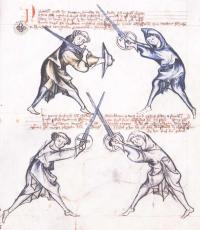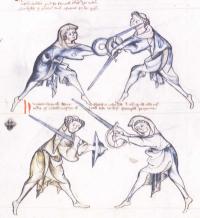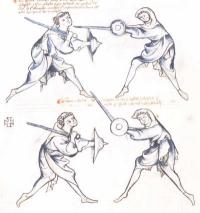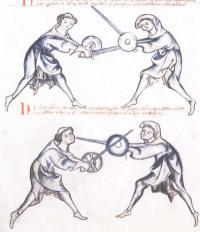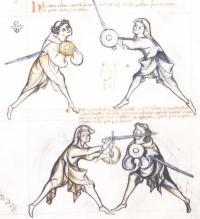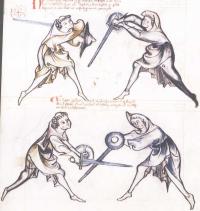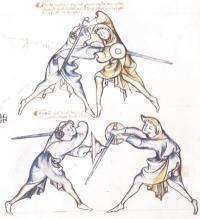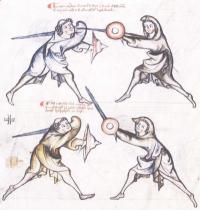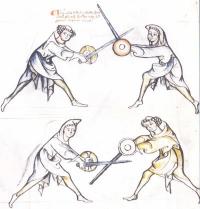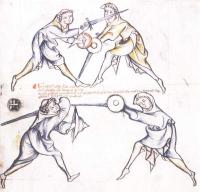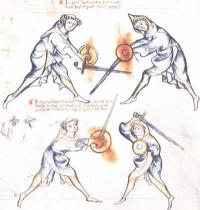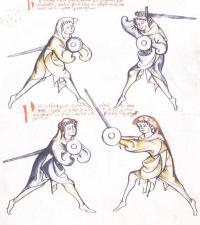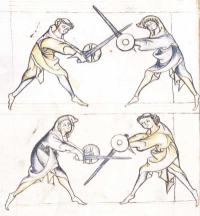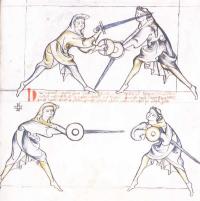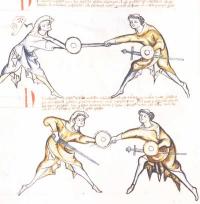|
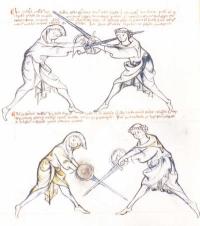
|
¶
Hic scolaris instructus mediante consilio sacerdotis ducit actum quemdam
qui nuncupatur durchtritt posset tamen recipisse plagam tam sinistram que
ducitur ex parte dimicatorum generalium quam dexteram que consueuit duci
ex parte sacerdotis & suorum iuuenium
Contrarium illarum duarum viarum erit sacerdotis euntis cum gladio sub
brachio* qui tunc attingit manus nudas ducentis plagas supradictas Licet
contrarium istud non sit depictum in exemplum ymaginum
¶
Nota quod sacerdos defndit hic actum superius dictum
quia
cum scolaris vero esset in actu itineris sacerdos religando atque
subpremendo gladium scolaris ligatum demonstrat vt hic patet per exemplum
Preterea quid sacerdotem ex hijs facere contingat si diligenter inspexeris
poteris edoceri & cetera
|
Here the pupil, instructed by the priest, executes an action that is called durchtritt.
He might get an opportunity far a strike to the left, as it is done by
general fencers, or to the right, as it is done by the priest and his
youths.
To counter these two possibilities, the priest may, with the sword
under the arm, reach the bare hands of him who executes the
abovementioned strikes, although this counter is not depicted in the
example image.
Note that the priest deflects the action mentioned above while the
pupil is still underway. The priest demonstrates this, depressing the
pupil's bound sword, as shown here in the image.
Later, you may learn what the priest will make of this if you pay
careful attention etc. |
 Notes on this presentation
Notes on this presentation